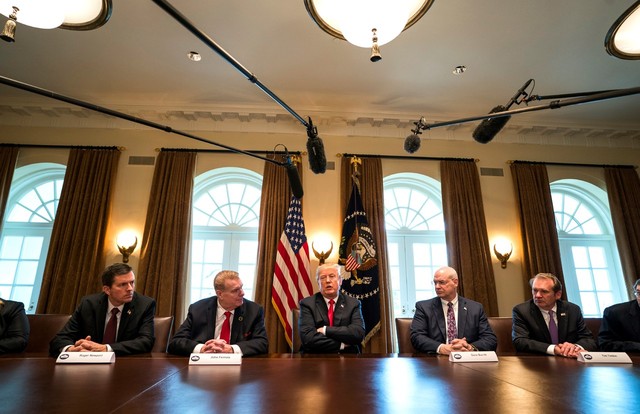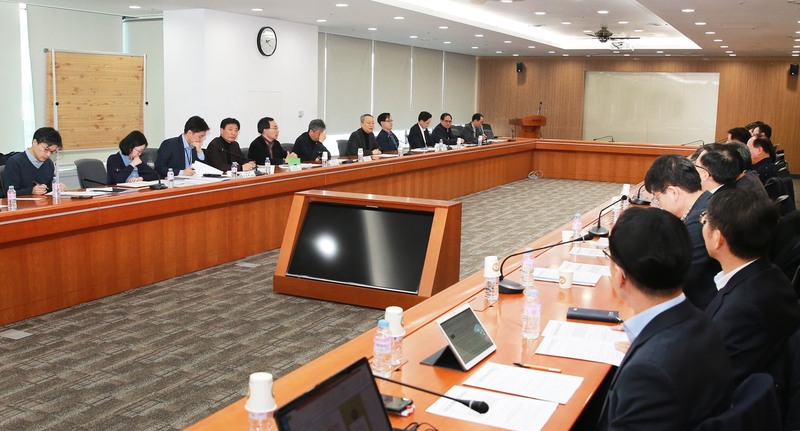 |
|
President Donald Trump meets with business leaders from the steel and aluminum industry to announce new tariffs on US steel imports at the White House on Mar. 1. (EPA/Yonhap News)
|
South Korean companies may need to halt steel exports in light of the decision
US President Donald Trump has finally played the card of placing additional tariffs on imported steel. While the tariffs are not as tough as originally feared, their impact will still be considerable. As Trump’s pressure on trade extends in all directions, concerns about the spread of Trump’s “America first” approach are growing not only in Canada, China and the EU but also inside the US. Affected companies in South Korea admit they may have to stop exporting to the US. During a meeting with leaders from American steel companies at the White House on Mar. 1, Trump said he would be slapping a 25% tariff on steel and a 10% tariff on aluminum and that these tariffs would stay in place for a substantial period of time. Next week, Trump is planning to officially sign an executive order containing the plan. Previously, the US Commerce Department provided three options to Trump based on Section 232 of the Trade Expansion Act: impose a tariff of at least 24% on all imported steel products; impose a tariff of at least 53% on steel from 12 countries, including South Korea, Brazil and China; or set a quota limiting steel imports from all countries to 63% of last year’s volume. Trump chose the first option, though he set the tariff at 25%, one point higher than the Commerce Department’s recommendation. But Trump did not make clear whether he would exclude Canada and other countries that employ a large number of American workers. Trump reportedly opted to impose a 25% tariff on all imported steel because steel-importing industries in the US were against any regulation at all but were especially opposed to the option of putting tariffs on 12 specific countries. A senior official in the Ministry of Trade, Industry and Energy (MOTIE) noted that six US economic groups, chiefly representing the steel industry, had recently sent an open letter to the White House officially voicing their objections, stating that steel demand industries generate large employment and value-added in the US and recalling that US safeguards on foreign steel in 2002 actually led to the loss of 200,000 US jobs. “Their objections may have had some effect,” the official observed. The conclusion is the slightly lower tariff rate of 25% was chosen because imposition of the ultra-high 53% rate on 12 countries alone might result in the procurement price for steel (materials and intermediate goods) in the US rising to match the increase, causing a chain reaction that leads to higher sales prices for final goods and declining consumption and sales for various US products.
 |
|
Minister of Trade, Industry, and Energy Paik Un-kyu meets with leaders of major Korean steel-producing companies at the Korea Technology Center in Seoul on Feb. 17 to discuss responses to the US administration’s decision to invoke Section 232 of the Trade Expansion Act. (provided by MOTIE)
|







